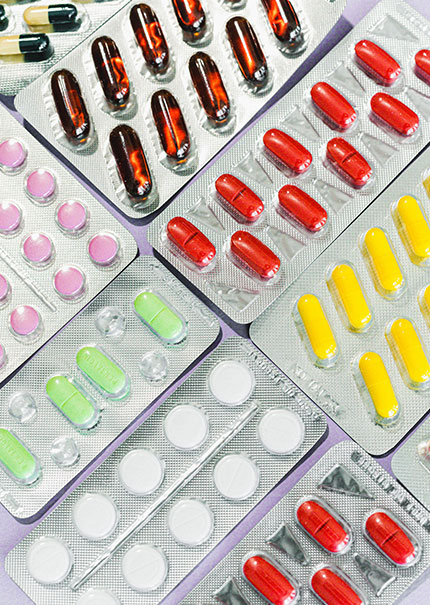This topic takes on average 55 minutes to read.
There are a number of interactive features in this resource:
 Chemistry
Chemistry
 Science
Science
Pharmaceutical manufacturers have to package their medicines before they can be sent out for distribution. The type of packaging will depend on the formulation of the medicine.
One common type of packaging for medicines is a blister pack. They are safe and easy to use and they allow the consumer to see the contents without opening the pack.
Many pharmaceutical companies use a standard size of blister pack. This saves the cost of having to make different tools and of having to change the production machinery between products. Capsules can also be packaged in a similar way.
Sometimes the pack will be perforated so that individual tablets can be detached. This means that the expiry date and the name of the product have to be printed on each part of the package.
The blister pack itself must remain absolutely flat as it travels through the packaging processes, especially when it is inserted into a carton. This poses interesting problems for the designers.

The packaging takes place in a sequence like a production line. Tablets are taken in at one end and boxed up cartons of blister-packed tablets pass out at the other end.
There are tight controls on all stages of the packaging process, as there are for the other stages of manufacture of a medicine. For example every blister must be filled with a tablet - any incomplete packs are identified by a camera and the pack is automatically ejected from the packaging line.
The cartons come as flat sheets. This is the net of the carton, it is printed and ready to fold into shape. Cartons and individual blister packs need to have the expiry date and batch number printed on them. This is done whilst they are being packed.
Packs of medicines also have to include leaflets containing information for patients. The leaflet tells the patient how to take the medicine, how often to take it and any other information - such as not to drink alcohol when taking the medicine. It also identifies some possible side effects and what to do if you suffer a side effect to the medicine.
The leaflet is often wrapped around the blister packs before they are inserted in the carton. Cartons are weighed to check that the right number of blister packs and a leaflet have been inserted, again any pack that is the wrong weight will be automatically rejected.
Cartons are normally stacked in batches of 20 which are wrpped together and placed in a larger outer carton for distribution to hospitals and pharmacies in this country or overseas